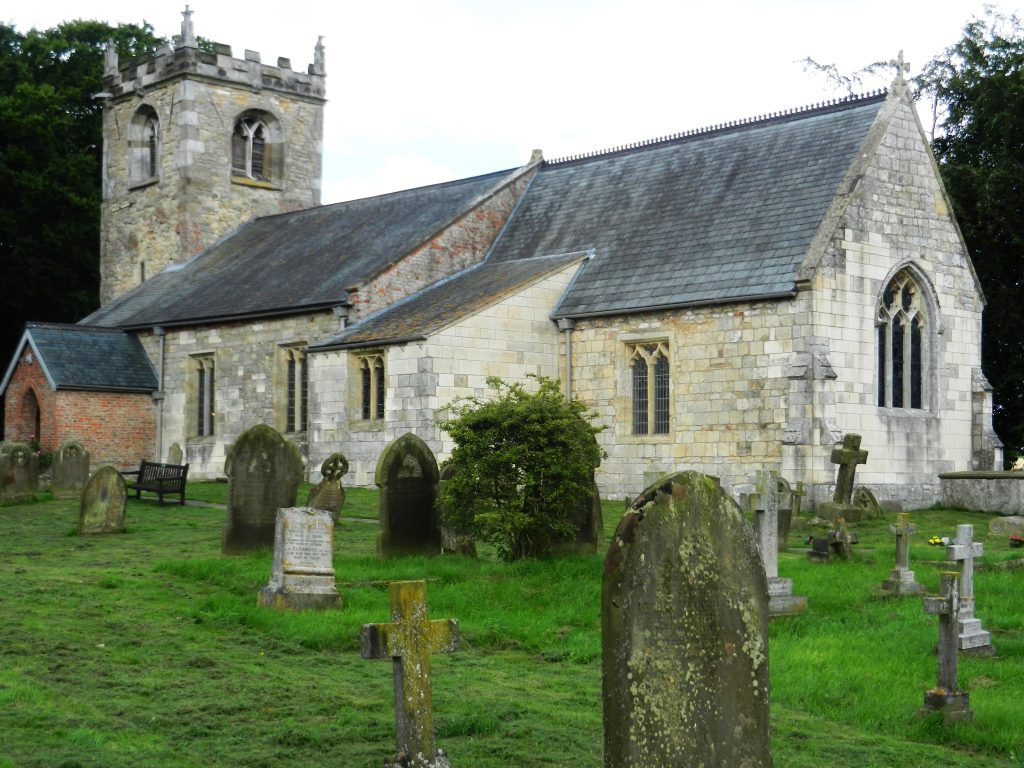
Today’s photo. shows Rowley church as viewed from the south-east. Rowley church stands alongside the early Georgian rectory, this now a hotel and tearoom. The five bay original house faces south, the east wing was a late 18th century addition and on a clear day standing at the french windows of this east wing there is a fine view across Hull in the middle distance and of the lower Humber beyond.
Pevsner describes the church as ‘stone built’, a rather open-ended phrase. Certainly, apart from the west tower, the church is built of limestone, coursed ashlar blocks, although Rowley stands on the chalk Wolds this building stone may well have come from quarries in the North Cave/Newbald area (apparently this walling was cement rendered in the 19th century, this not removed until the 1980s).
Humberside is usually portrayed as a region poor in local building stone but this is not really the case. In Holderness, or at least east Holderness, the local vernacular building ‘material’ was cobble, stones from the beach worn smooth by marine abrasion, usually roughly coursed and set in a thick sturdy mortar (cobble walling can be found as far west as Paull church), this an example of how the strength of a wall is as much to do with the mortar as the stone.
So Holderness had no ‘natural’ building stone, but what was available was used to create ‘vernacular’ walling. A heavy dependence on the mortar to create secure walling relied on a considerable supply of lime, again, not available locally but a likely source would have been the whiting works/quarry at Hessle.
Timber-framed buildings in Holderness would have been few and far between as most of the area’s natural woodland had been felled by the late Middle Ages, if not before.
Of course in the 20th century brick had already become the main building medium in Holderness, this increasingly from national, rather than local, sources of supply.
(to be continued)